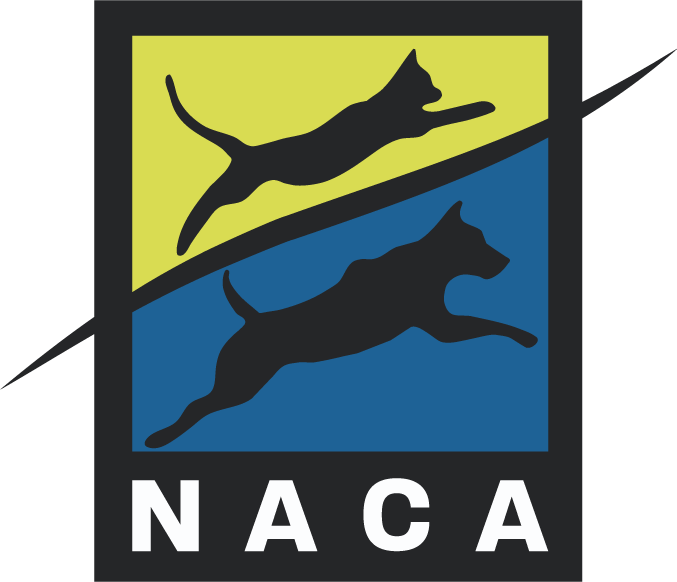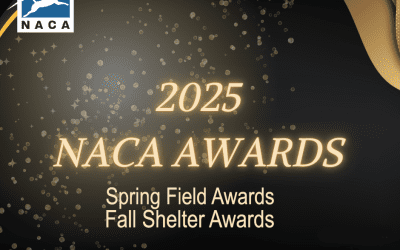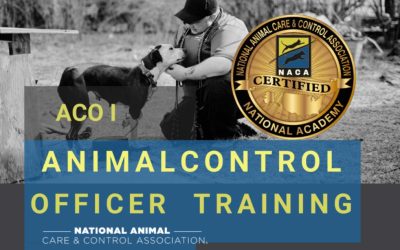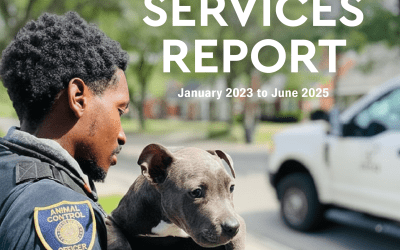ACA Guideline on Appointment-Based Pet Intake into Shelters
The outdated practice of unscheduled intake leads to a number of negative impacts (See Appendix A). Some of the consequences of on-demand, immediate intake include animals being unnecessarily impounded; families and pets being needlessly and often permanently separated; increased stress, disease, and death in shelter animals; poor customer experience; compromised staffing efficiency; and decreased organizational effectiveness.
Given the numerous harms and risks associated with unscheduled intake, we recommend all animal shelters replace this practice with an appointment-based system that includes individual assessment and a case management approach for all non-emergency requests.
How has shelter pet intake evolved over the past 25 years? Historically, animal services agencies have provided on-demand shelter impoundment of owned and loose or lost pets. Over the past several decades, as animal services agencies move away from treating pets as simply a public nuisance and increasingly recognize a full 98% of pet owners value their pets as much as human family members, there has been a shift in how agencies manage intake processes. Closing of overnight ‘drop boxes,’ a shift to providing pre-intake counseling, and appointment-based intake management are all reflections of the evolving role of animal services and the high value our communities place on the human-animal bond.
What is an appointment-based approach to shelter intake? This approach involves appointment-based intake of animals in non-emergency situations into the animal services facility. It is appropriate for routine intake of pets being surrendered by their owners as well as lost friendly, healthy animals. Cats, dogs, puppies, and kittens, along with other companion animals may be scheduled for intake following an initial assessment (by phone or web/e-mail) to determine if shelter intake is the only viable option or the best option for that pet and caregiver.
What is the benefit to my community and organization? The purpose of a scheduled or appointment policy is to ensure that pets who can be safely cared for in their communities do not have to unnecessarily enter the animal shelter. When effectively implemented, this practice will reduce the population of pets housed in the shelter, help more pets get home faster, improve community health and safety, and reduce shelter-borne illnesses and behavioral decline associated with crowded animal shelter conditions. Importantly, managed intake frees up shelter resources to ensure emergencies and critical situations are handled promptly and effectively. Scheduled intake is better for pets, better for people, and leads to healthier, safer communities.
What does the appointment-based intake process look like? When a person has a pet, they want to surrender or have found a lost pet, they contact the animal shelter via phone, email, or web-based form. Owners or finders may be asked to fill out an information form. A shelter staff member or volunteer then follows up with a conversation to determine if the organization can help the owner or finder identify a solution that does NOT involve the pet coming to the shelter. If no alternative solution can be found, and impoundment into the facility is determined to be the best option, an appointment is scheduled for the finder or owner to bring the pet into the shelter. Depending on the urgency of the situation and the capacity of the shelter, that appointment may be scheduled on the same day or up to several weeks out.
Does scheduling intake mean closing your doors? No. Effective intake management practices do not involve closing doors or cutting off access to the public. It also doesn’t mean organizations refuse to help or turn away sick or injured pets, animals in immediate danger, or dogs that pose a threat to public safety. On the contrary, managing intake allows communities to provide faster response to urgent and critical situations and provide overall better service to the community.
How do shelters make the switch to appointment-based intake? When an animal shelter does implement a managed intake policy, here are the things they should do to ensure both staff and the
community understand the new policy:
- Hold dialogue sessions with staff, volunteers, and other stakeholders to talk about the reason for and potential challenges related to managing intake, and to troubleshoot any organizational barriers.
- Write internal policies for what constitutes emergency vs. non-emergency intake and communicate these policies with staff and volunteers.
- Clearly communicate the intake policies and process to the public on the shelter website and other public platforms.
- Build a prioritization protocol so emergencies (sick or injured animals, dangerous animals, and animals in immediate danger) receive prompt field response and emergency intake as needed.
- Identify staff and/or volunteers who can talk to pet owners and finders as well as schedule intakes when needed. This may initially be done by intake staff (especially at smaller organizations) but may grow to include staff or volunteers specialized to work with specific situations such as underage kittens, community cats, or potential pet surrenders.
What can members of the public expect? As part of implementing a managed intake practice, animal shelters provide help and support for pet owners. Pet finders, owners, and caregivers should be able to reach the shelter (immediately for emergencies and within a reasonable time frame for non-emergencies) and talk to a representative about their situation and needs. The member of the public should expect that the representative will offer alternatives to bringing the pet to the shelter and will ask the person calling to help by holding the pet, getting a lost pet home, or helping to rehome the pet. Some shelters can provide additional support, such as services to keep pets in their homes or supplies to care for found underage animals. The person should also expect if no viable alternatives can be identified that the pet will be scheduled for intake into the shelter, based on the urgency of the need and the capacity of the shelter at any given time.
What services can animal services provide to help keep pets out of the shelter? Here are a few low-cost, effective, and simple ways shelters can help keep pets in their homes and gain community support for managed intake:
- Direct field service officers to attempt to identify dogs in the field and return healthy and friendly dogs instead of impounding them into the shelter.
- Help pet owners utilize a free self-rehoming platform to safely rehome their pets.
- Implement robust lost pet reunification practices like automated, real-time found reporting, use of social media sites like NextDoor and Facebook, and field return of lost pets by animal control officers.
- Offer pet resources or pet support sericevs to help people find alternatives to shelter surrender and identify resources that can help them keep a pet.
- Create a finder–to–foster program and safety net foster program to place pets in foster homes instead of the shelter
APPENDIX A: What are the consequences for communities and shelters of non-scheduled intake
practices?
- Compromised emergency response. Unregulated intake of non-emergency cases often leaves shelters operating chronically at maximum capacity, limiting the ability to respond to true emergencies (e.g., disaster or outbreak response) or critical issues (such as major cruelty or hoarding cases) without resorting to euthanasia to make room or severely crowding the shelter with the related increased risks of disease and injury.
- Lost opportunities to maintain the human-animal bond. Finding solutions for owners struggling to keep a pet is difficult in the busy lobby of an animal shelter with other clients waiting in line. Operating via unscheduled, unplanned surrender of pets limits the possibility of offering alternative possibilities (such as short-term food pantry support, behavioral advice, or treatment of minor medical issues) that could keep families and pets together.
- Fewer lost pets get back home. Nationally, fewer than half the stray pets brought into shelters will be reclaimed by their owners (Count 2020). Dogs and cats are >11 and >40 times (respectively) more likely to be found within the neighborhood of origin than by a call or visit to an animal shelter (Slater, Weiss, et al. 2012). Allowing found pets to be dropped off at a shelter without at least a brief conversation with the finder to suggest other ways to reunite the pet with its family (such as posting on local lost-and-found websites or having a field officer scan for a microchip) eliminates the most promising path for owner-pet reunification in many cases.
- Increased disease rates in shelters. Unregulated intake regardless of shelter capacity almost inevitably leads to increased length of stay, crowding, and increased disease transmission (Karsten, Wagner, et al. 2017). Treatment of the resulting illness incurs additional costs, adds to the burden on staff and facility and in some cases, the disease is directly fatal or results in euthanasia.
- Higher stress levels for animals. Unscheduled intake increases noise and stress as well and limits the possibility of ensuring some quiet times during which animals can rest and/or volunteers can engage in quiet enrichment activities. Stress levels of impounded animals will prolong shelter stays by exacerbating behaviors that discourage adoption, such as barking and hyperactivity, feeding into an ongoing negative cycle. Stress can also suppress animal immune systems and directly result in disease spread.
- Diminished ability to provide good customer service. Although walk-in access to shelter services may seem like a convenient option, few shelters are sufficiently staffed to provide prompt service on a spontaneous basis for the wide variety of needs presented by community members. Whether looking to surrender a pet, drop off a found animal, adopt a new pet, reclaim their animal or access any of the other services offered by the shelter, clients are better served by appointment systems that allow shelters to plan staffing in alignment with anticipated needs and regulate flow to avoid long lines and bottlenecks.
- Staffing inefficiency. Unpredictable workflow means that staff may be underutilized at some times and overwhelmed at others, leading at best to inefficiencies and at worst to significant lapses in animal care or customer support. Unpredictable workflow is also a significant risk for staff stress and turnover, exacerbating staffing shortages and workload issues.




